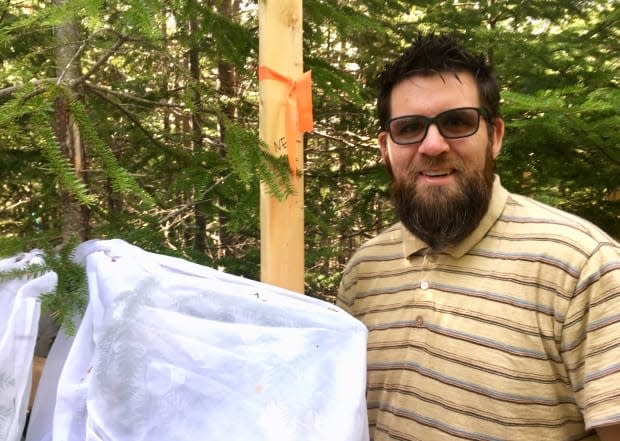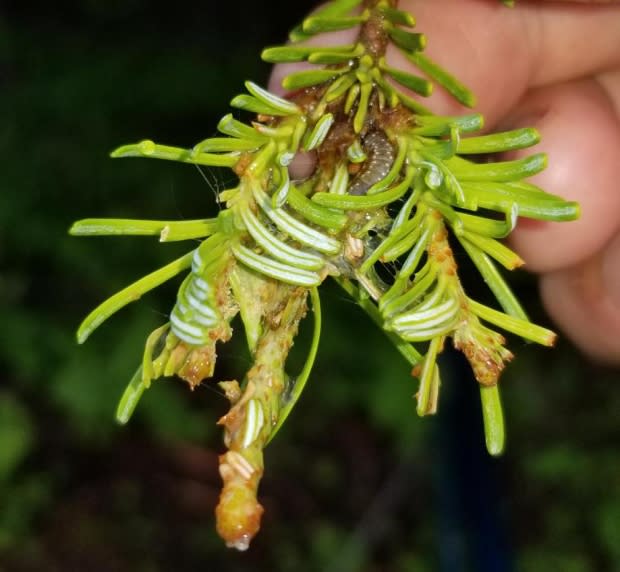What bugs the bugs? N.L. research to fend off spruce budworm
Researchers with the Canadian Forest Service in Newfoundland are trying to learn more about an old forest pest, the spruce budworm, in hopes of keeping it from getting out of control again.
The spruce budworm devastated the island's forests in the 1970s and 1980s, but there is currently no outbreak.
Scientists are hoping it will stay that way and, to help keep budworm populations low, the researchers are studying to find out more about the moth's natural enemies.
Eric Moise, research scientist with the Canadian Forest Service of Natural Resources Canada, said parasitoid wasps and flies are believed to be among the budworm's predators.

"If you've ever seen the movie Alien, it's sort of a similar scenario where they'll impregnate the spruce budworm with their eggs and, after a certain amount of time, those will hatch and out pops your wasp or your fly," said Moise.
"Very gruesome, but also very effective."
A bug's life
Moise said more is known on the mainland of Canada about the natural enemies of the spruce budworm, but there hasn't been as much research done here in Newfoundland until now.
There is currently an infestation of spruce budworm affecting forests in Quebec, and an early intervention program in New Brunswick is trying to keep the moth at bay there.

But Moise said there's always a concern that budworm moths could come to Newfoundland in a mass migration and mix with local populations to cause an outbreak.
Moise said the climate and topography in Newfoundland mean that the budworm's natural predators could be different here.
So researchers want to do their best to gain information now, before an outbreak happens.
They've set up an experiment at young balsam fir sites in Western Newfoundland, off Lady Slipper Road which is a resource road near Corner Brook.
The hope is that natural enemies of the budworm could be utilized to keep the population under control.
Even if a spray program of some sort were needed, Moise told CBC Newfoundland Morning that a biological pesticide would be used as opposed to a synthetic chemical one.

"You can almost think of this sort of monitoring program that we have for budworm as a whack-a-mole operation," he said.
"If we see the numbers beginning to rise to a threshold where we know that we're at a threat of a potential outbreak, then those spots will be treated to bring down those budworm populations."
Going out on a limb
To do the current research in this province, Moise and his team have covered select balsam fir branches with sleeve cages that look like semi-sheer pillowcases, and they've put spruce budworm on those branches.
Researchers then allow the spruce budworm to develop through different stages of the bug's life before removing the sleeve cages to expose the budworm to its natural enemies.

Then the branch is removed and brought back to the lab for analysis, to determine what natural predators are doing to the budworm.
The Canadian Forest Service also has trail cameras set up to look for birds or spiders that also might be preying on the spruce budworm on the exposed branches.
At this point, Moise said it's too soon to say anything about the researchers' findings, as this is the first summer of a multi-year experiment and they don't have enough data yet.
He said there may be some concrete data to share in a few months from now.
Read more articles from CBC Newfoundland and Labrador

